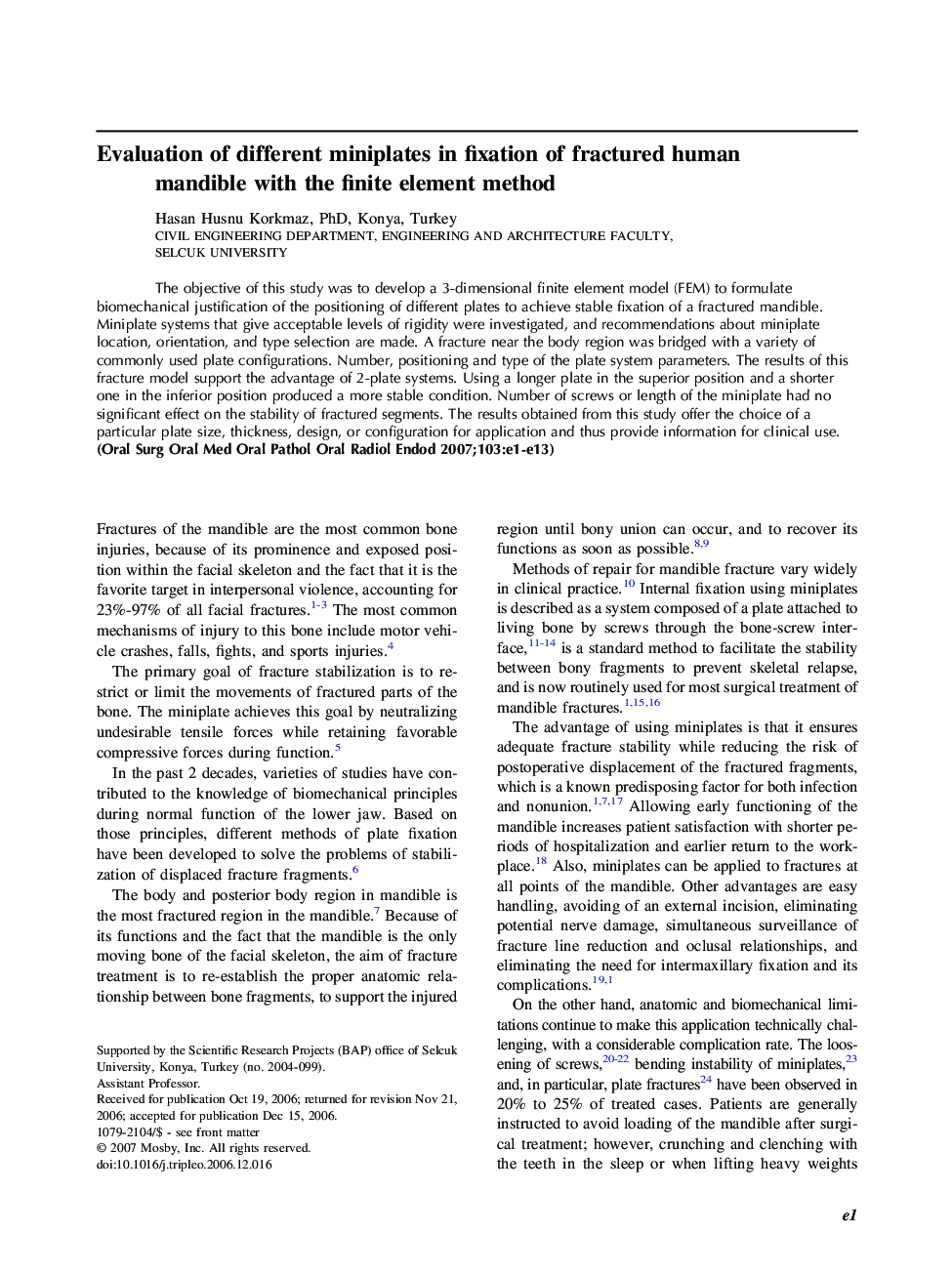| Article ID | Journal | Published Year | Pages | File Type |
|---|---|---|---|---|
| 3169342 | Oral Surgery, Oral Medicine, Oral Pathology, Oral Radiology, and Endodontology | 2007 | 13 Pages |
The objective of this study was to develop a 3-dimensional finite element model (FEM) to formulate biomechanical justification of the positioning of different plates to achieve stable fixation of a fractured mandible. Miniplate systems that give acceptable levels of rigidity were investigated, and recommendations about miniplate location, orientation, and type selection are made. A fracture near the body region was bridged with a variety of commonly used plate configurations. Number, positioning and type of the plate system parameters. The results of this fracture model support the advantage of 2-plate systems. Using a longer plate in the superior position and a shorter one in the inferior position produced a more stable condition. Number of screws or length of the miniplate had no significant effect on the stability of fractured segments. The results obtained from this study offer the choice of a particular plate size, thickness, design, or configuration for application and thus provide information for clinical use.
